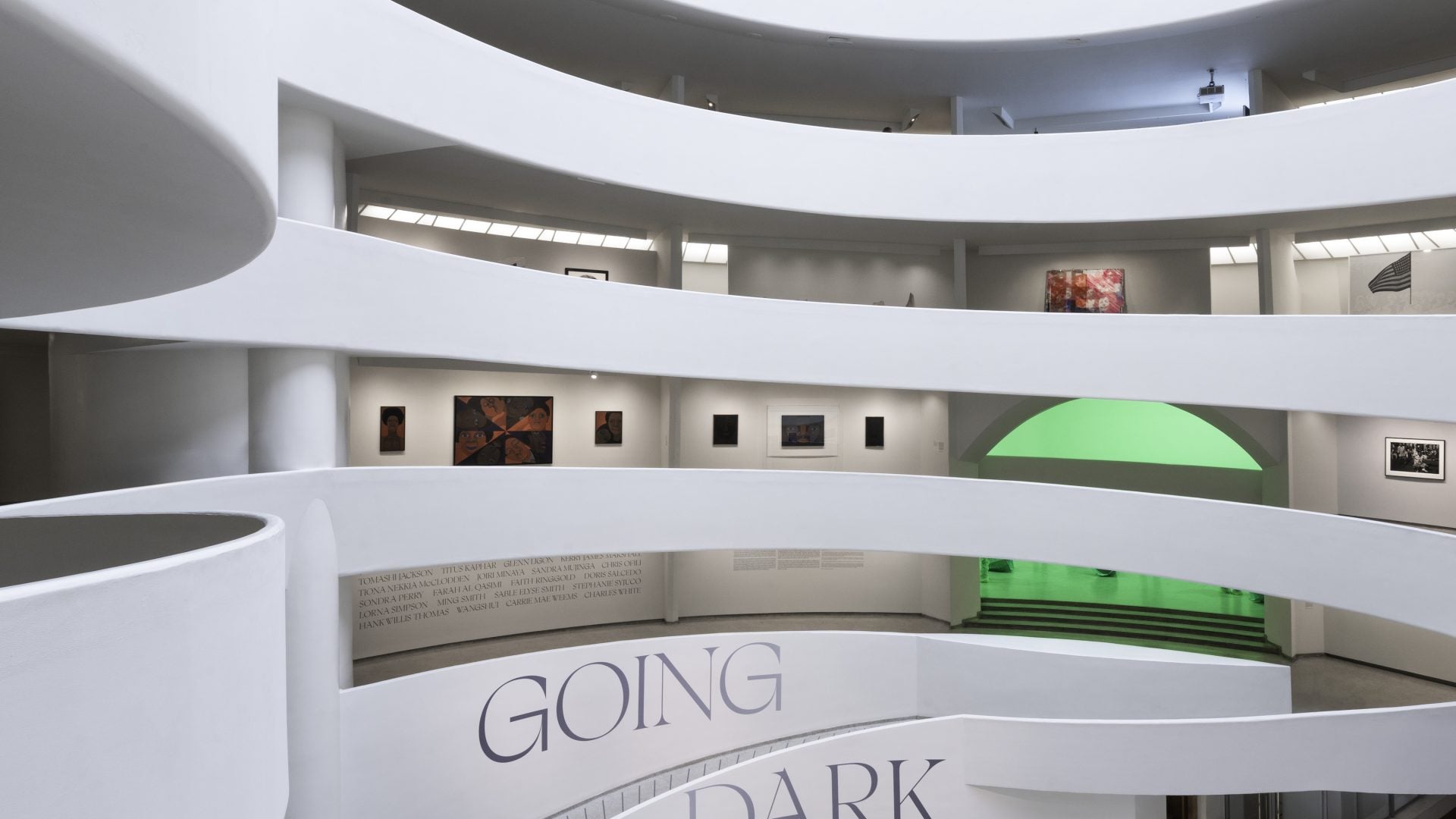
For Dr. Ashley James’ second exhibit at the renowned Guggenheim Museum, it was important for her to center the work of Black and female artists.
“My identity as a Black woman is relevant in everything I do, though I would say my identity as a Black feminist perhaps even more so as it relates to this exhibition,” James told ESSENCE.
“To me, Black feminism means to question power – how it’s constructed, in what ways, and to what ends. And I think many of the artists in the show are troubling power,” James added.
When contemplating the name of the exhibition, she landed on “Going Dark: The Contemporary Figure at the Edge of Visibility.”
James said she was typing ideas into her Notes app, telling The Cut, “We know if somebody says, ‘You went dark on me,’ they’re saying, ‘You didn’t reply to my text.’
“It’s also resonant in terms of darkness as a concept. The darkness that is literally Blackness. I’m well aware of the cheekiness of ‘going dark’ and what it means for it to be a Black rotunda show in the museum that does not have a track record of having Black artists at all, let alone in the rotunda. It clicks,” said James.

What does it mean to be visible? This is the very question James attempts to explore, especially as it relates to being seen and how one is seen by the world.
“I think people who have been made less visible are going to be more conscious of calling attention to it,” said James.
“The show takes on many aspects of visibility across the spectrum — from something that is quite specific to Black women and the sense of a double marginalization that comes with race and gender, to the question of surveillance and what it means to be hyper visible in our ever-increasing technological surveillance state, which is something that everyone is thinking about to some degree,” continued James. “It just makes sense that marginalized peoples would be the first ones to kind of call it to attention, and that is reflected in the grouping.”
Museumgoers can view this exhibition, which opened Friday, Oct. 20 until April 7, 2024. It occupies the quintessential part of what makes up the Guggenheim—the rotunda. You can experience more than 100 works by nearly 30 artists, presenting “art that feature partially obscured or hidden figures, thus positioning them at the ‘edge of visibility.’”
James is a graduate of Columbia University and received her Ph.D. from Yale University in English literature and African American studies. She became the Museum’s first Black curator in 2019. This is her second exhibit at the Guggenheim following 2021’s “Off the Record.”